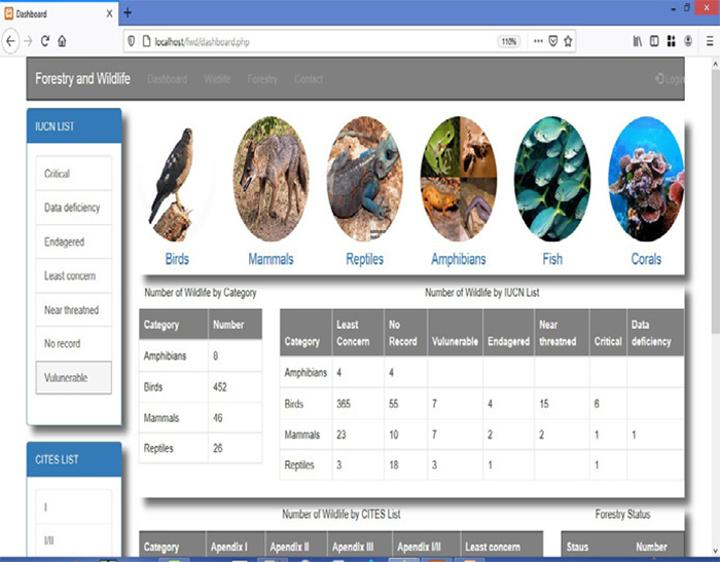Africa-Press – Eritrea. Adequate information is necessary for the improvement of all areas of agriculture, which plays a significant role in the economic and social development of developing countries. With the rapid development of Information and Communication Technologies (ICTs), data and information can be effectively generated, stored, analyzed, disseminated and used to support farmers and farming communities to improve agricultural productivity and sustainability.
In 2019, the Ministry of Agriculture (MoA) established the Agricultural Strategic Information System Division (ASISD), which had been a unit within the MoA limited to managing agro-meteorology and national food information systems, to facilitate ICTs-based information dissemination to farmers and farm communities to improve productivity and bring about economic, social and environmental sustainability. ASISD was formed by bringing together different units within the MoA, such as GIS and remote sensing, IT, Agricultural Innovation System Division and Agricultural Expert System.
Agricultural SIS, which is a long-term stimulus for agricultural development and an important indicator of agricultural modernization, is a tool used by the MoA to collect, analyze, and share information. It is a data base of Agro-Meteorology, Agricultural Market, Geographical Information, Strategic Commodities, Agricultural Innovation and many more.
The newly established ASISD is reinforcing the MoA’s geographic information systems, agricultural expert systems, information technology, agricultural market information systems, agricultural innovation systems, and agricultural meteorology.
Agro-Meteorology deals with the establishment and assessment of agro-meteorological stations in Eritrea by adopting mobile agro-meteorology data collection method and communication systems. It studies and makes situational analysis of existing agro-meteorological stations in Eritrea and their management and utilization of weather data. The department manages weather data collected from around 120 agro-meteorological stations on monthly and seasonal rainfall in the summer and autumn rainy seasons, which helps in timely decision making.
After conducting a survey in all the agro-meteorological stations, ASISD decided to develop a systematic data collection method designed to receive the information on time directly from the stations so that it can be used in the decision making. ASISD established and assessed a network of agro-meteorological stations in Eritrea for this purpose. These stations gather different types of information, including temperature, solar radiation, humidity and amount of rainfall. At this time the data collected focuses merely on the factors that mostly affect agricultural activities in Eritrea. ASISD receives rainfall and temperature data, which is stored in a data base, to help with forecasting, and is distributed to agricultural extension workers every ten days.
Agricultural Expert Systems, part of artificial intelligence, needs IT experts and skilled personnel in related fields. ASISD’s aim is to disseminate information developed by this method to farmers in different forms to enable them to solve problems they encounter or manage their agricultural land when extension workers are not available. The system is interactive through which farmers can access information and guidance by navigating the developed tools.
Agricultural Innovation System (AIS) targets educational and research institutions and individuals who produce innovative agricultural works and research studies annually, and ASISD coordinates, assesses and manages the innovation works produced. Innovation here is broadly defined as a process of putting knowledge into use, be it in the form of technology, practice, or a particular way of working. Securing food sustainability in Eritrea by introducing new methods, inventing more effective products, processes, services, technologies and gadgets are all part of the agricultural innovation system.
Currently, the MoA is conducting an AIS assessment for capacity building, focusing particularly on around 20 innovation processes that are locally available. The assessment is carried out by studying the network through structural and functional analysis, capacity building and the enabling environment. If, for example, a locally produced or imported improved seed is to be given to farmers, it is assessed with the help of AIS experts before it is distributed. The information is then stored in a data base which can serve as an impetus for further studies or a reference for innovation processes. The assessment is useful because it provides information about the enabling environment and identifies the gaps missing in the capacity development.
ASISD has contributed tremendously this year in the provision of information about rainfall and agricultural markets, Mr. Tesfalem Mesfun, Director of ASISD, said. After giving training workshops to regional experts on systematic rainfall data recording and agricultural market information system (AMIS), ASISD is now able to collect weekly agricultural market price information for 45 significant commodities from 10 cities in the Southern, Anseba, Gash Barka, and Central regions.
The collected data is then analyzed to assess the factors that have prompted market price varieties. Such data is also used for other purposes. For instance, the Saving and Micro-credit branch of the MoA uses the information to identify the most profitable areas for farmers. ASISD plans to disseminate timely information directly to farmers, enabling them to have better control over the market price of their produce. Mr. Tesfalem added that the AIS unit is working to establish a network of actors in agricultural innovation by assessing people and institutions involved in agricultural knowledge transformation and implementation.
The promotion of hydroponic and aquaponic farming is one of the most notable outputs of ASISD this year. The division is also moving to develop mobile applications and e-learning platforms, such as mobile applications of cropping practices and plant protection in English and Tigrinya, web applications for Eritrea‘s fauna and flora database, and agricultural statistics desktop applications for use by experts and farmers. The College of Marine Science, Eritrean Institute of Technology and Hamelmalo College of Agriculture were involved in the development of the application softwares and data bases.
The IT unit of ASISD has three sections: maintenance, software development and network administration. The software development section prepares different mobile and web applications and softwares according to the information or data needed for particular users. For example, farmers and extension workers can access critical information they need about a particular crop or disease by navigating an appropriate Mobile application. Applications developed by the unit include dairy farm management software, agro-meteorology data collection application, agricultural statistics software and web and mobile applications.
The application and software developed for the farmers is designed in a language that is understandable to them. This year, the departments within ASISD have a plan to develop a horticultural, dairy and market database and make it accessible to users. The local IT experts who work for the MoA have been applauded for a job well done in designing the MoA’s Intranet website and the agricultural digital library, developing various mobile, desktop, and web applications, and facilitating virtual meetings. Going forward, Mr. Tesfalem said, the division has a plan to strengthen the rainfall stations so that they can deliver more accurate weather information and to increase the amount of agricultural market information collected from major cities and towns.







